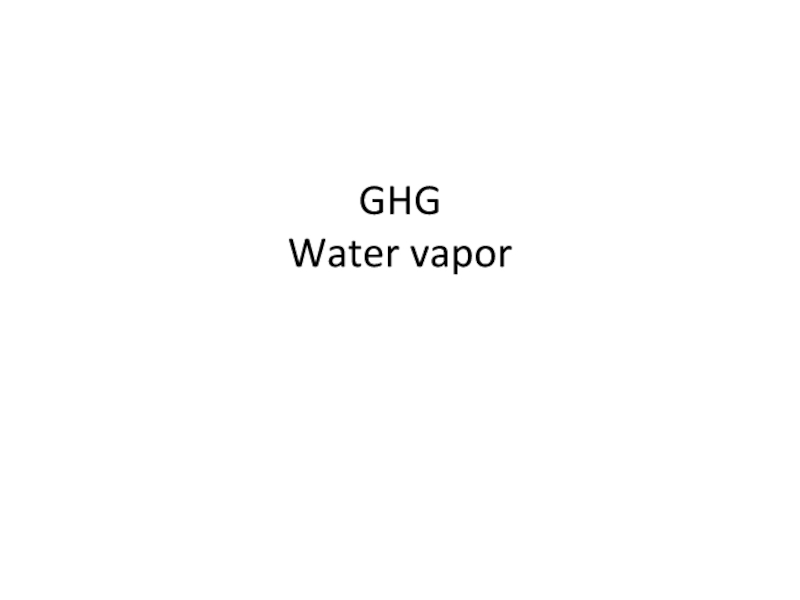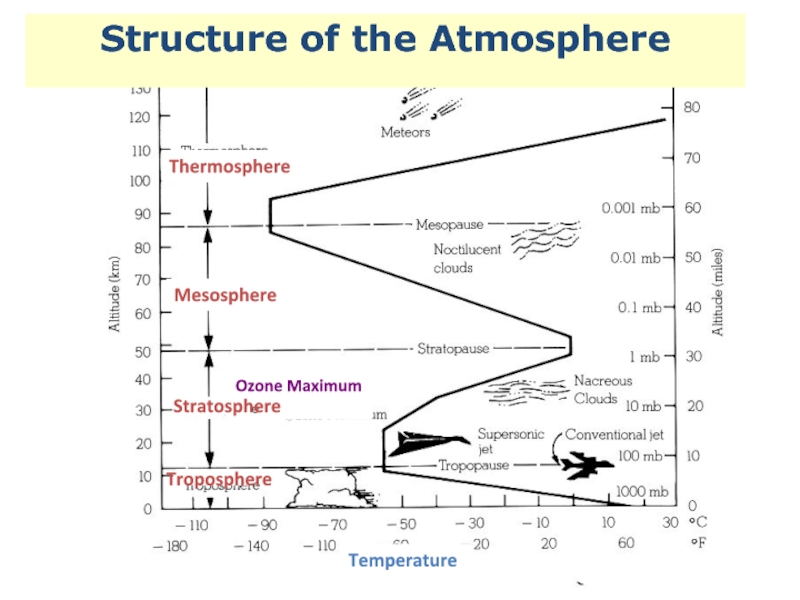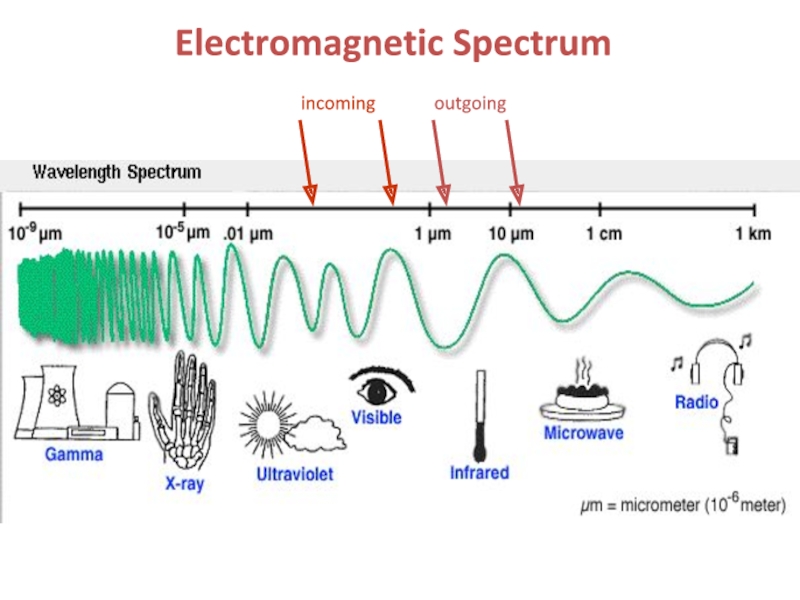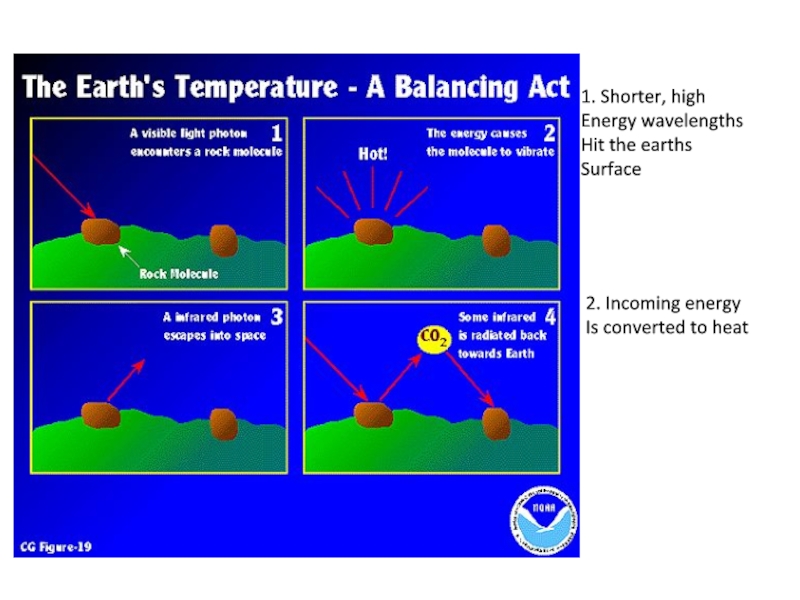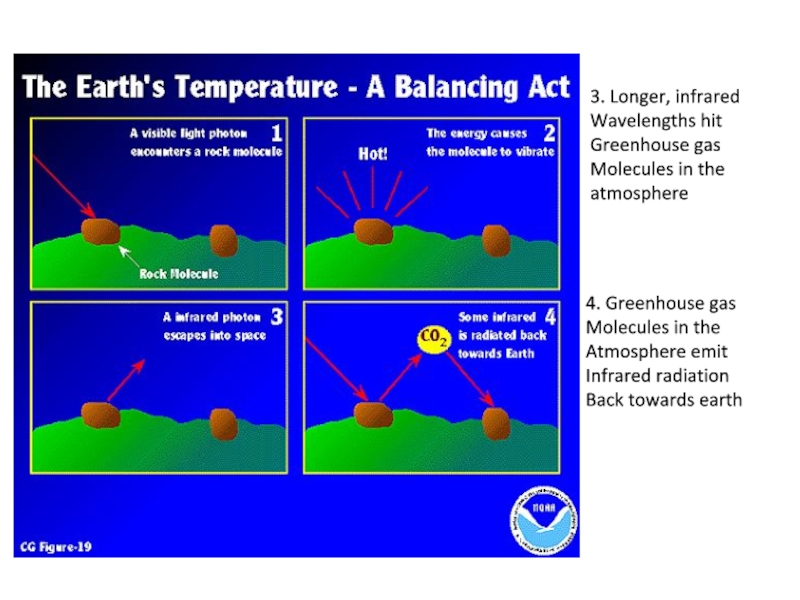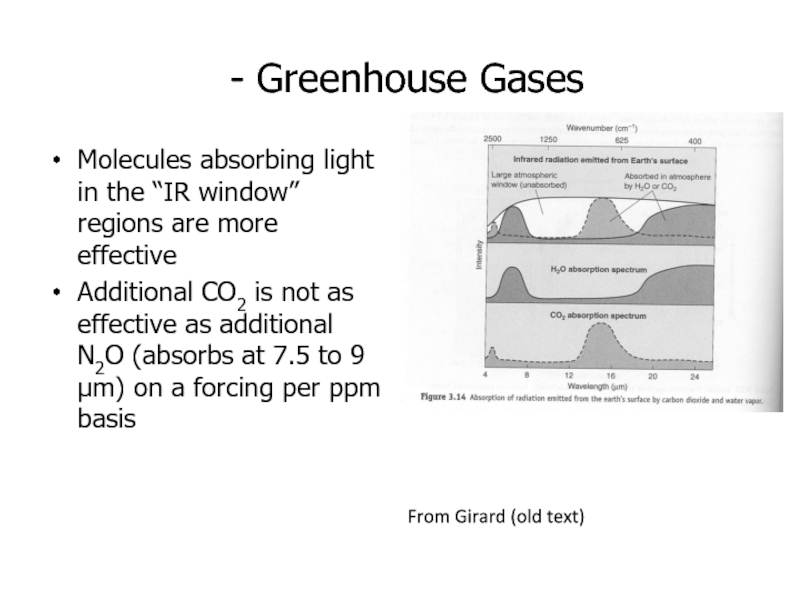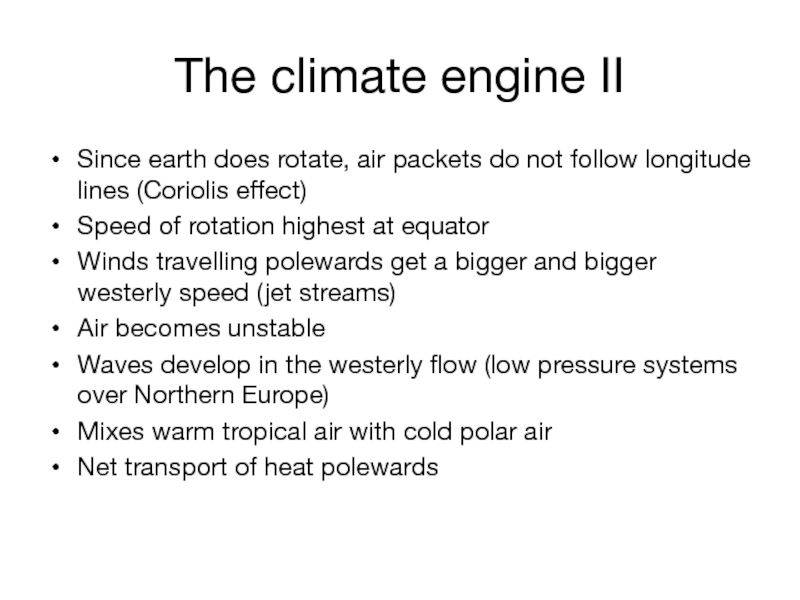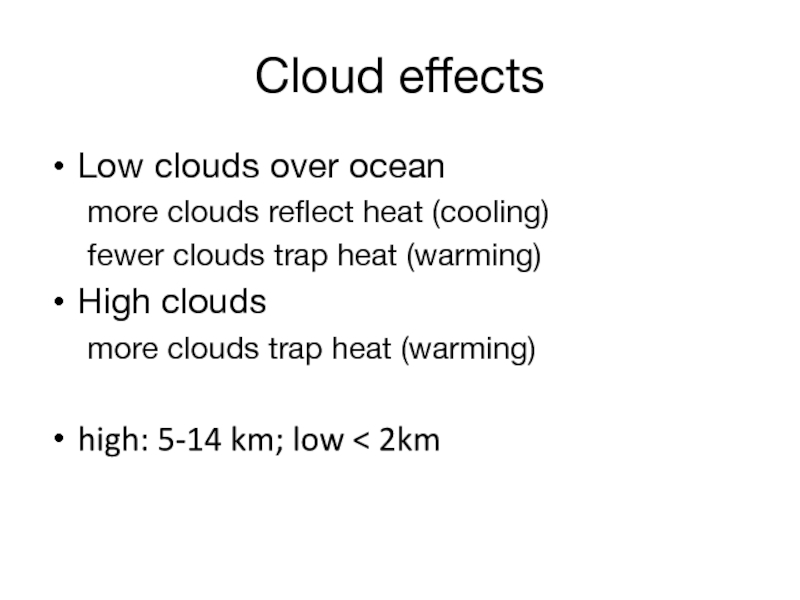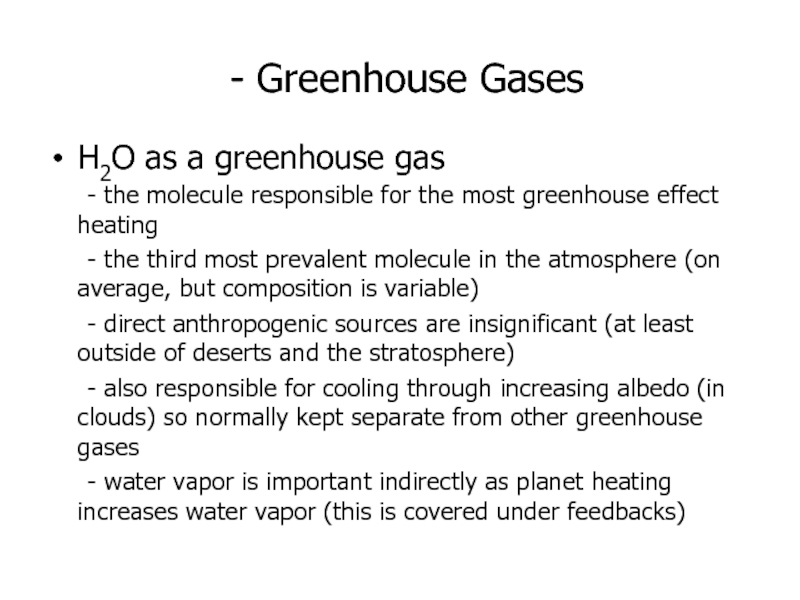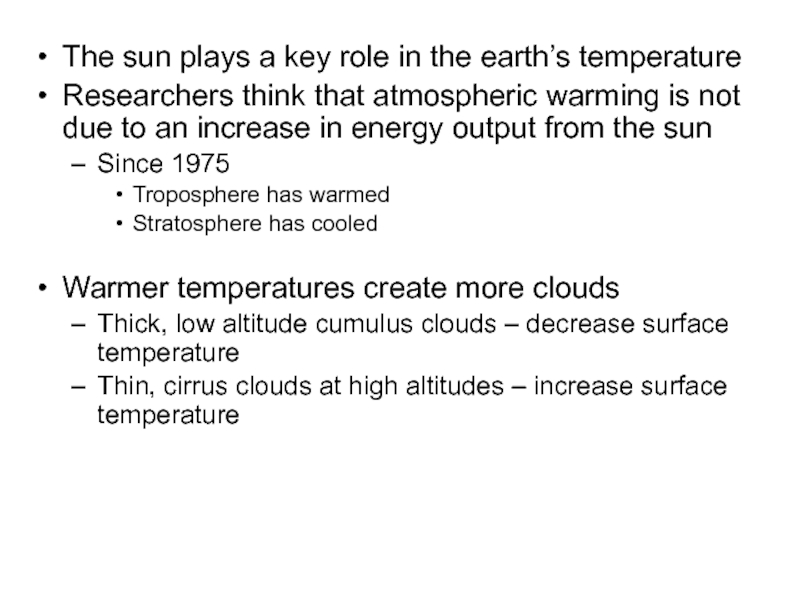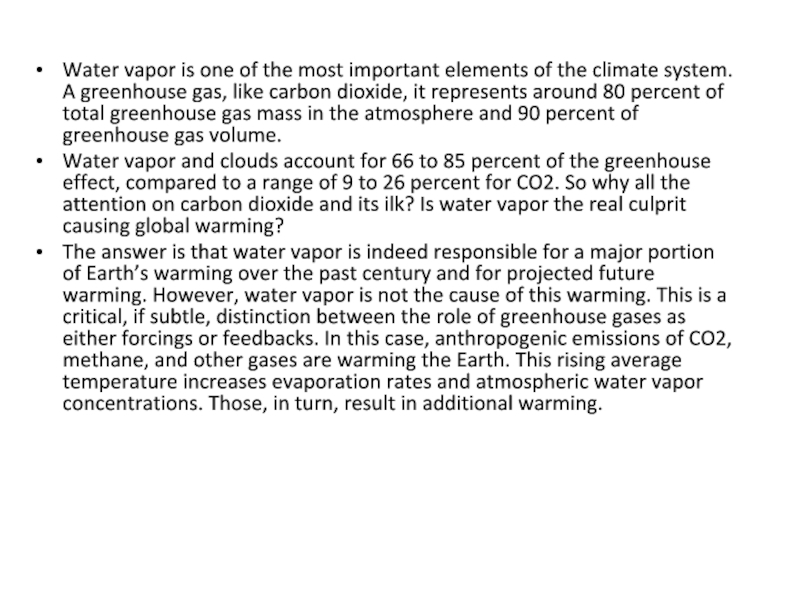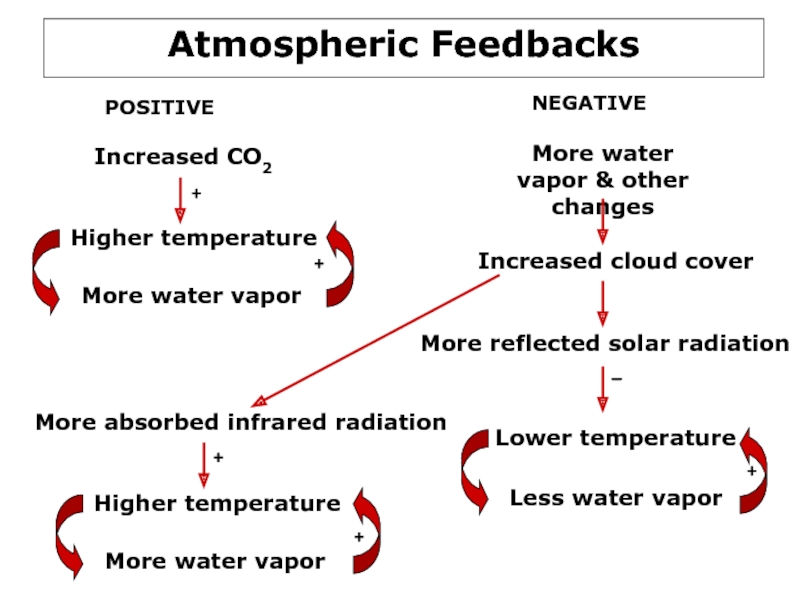Разделы презентаций
- Разное
- Английский язык
- Астрономия
- Алгебра
- Биология
- География
- Геометрия
- Детские презентации
- Информатика
- История
- Литература
- Математика
- Медицина
- Менеджмент
- Музыка
- МХК
- Немецкий язык
- ОБЖ
- Обществознание
- Окружающий мир
- Педагогика
- Русский язык
- Технология
- Физика
- Философия
- Химия
- Шаблоны, картинки для презентаций
- Экология
- Экономика
- Юриспруденция
GHG Water vapor
Содержание
- 1. GHG Water vapor
- 2. Structure of the AtmosphereThermosphereMesosphereOzone MaximumStratosphereTroposphereTemperature
- 3. Electromagnetic Spectrumincomingoutgoing
- 4. 1. Shorter, highEnergy wavelengths Hit the earthsSurface2. Incoming energy Is converted to heat
- 5. 3. Longer, infraredWavelengths hitGreenhouse gasMolecules in theatmosphere4. Greenhouse gasMolecules in theAtmosphere emitInfrared radiationBack towards earth
- 6. 78% nitrogen20.6% oxygen< 1% argon0.4% water vapor0.036%
- 7. Absorption Spectra of Atmospheric GasesAnthes, p. 55 CH4CO2N2OH2OO2 & O3 atmosphereWAVELENGTH (micrometers)InfraredVisibleUV
- 8. Greenhouse gases absorb infrared radiation and prevent
- 9. Climate Change - Greenhouse GasesTo be
- 10. Earth’s Atmospheric GasesNon- GreenhouseGases99%GreenhouseGases 1%
- 11. Greenhouse GasesCarbon DioxideWaterMethaneNitrous Oxide
- 12. Greenhouse GasesMolecules must absorb light in
- 13. - Greenhouse GasesMolecules absorbing light in
- 14. Selected Greenhouse GasesCarbon Dioxide (CO2) Source: Fossil
- 15. Greenhouse Effect & Global WarmingThe “greenhouse effect”
- 16. Global Energy Redistribution
- 17. Radiation is not evenly distributed over theSurface
- 18. The climate engine IISince earth does rotate,
- 19. Atmospheric Pressure Decreases With Height Most
- 20. Cloud effectsLow clouds over oceanmore clouds reflect
- 21. Fig. 19-10, p. 513
- 22. - Greenhouse GasesH2O as a greenhouse
- 23. The sun plays a key role in
- 24. Water vapor is one of the most
- 25. Слайд 25
- 26. Скачать презентанцию
Structure of the AtmosphereThermosphereMesosphereOzone MaximumStratosphereTroposphereTemperature
Слайды и текст этой презентации
Слайд 2Structure of the Atmosphere
Thermosphere
Mesosphere
Ozone Maximum
Stratosphere
Troposphere
Temperature
Слайд 41. Shorter, high
Energy wavelengths
Hit the earths
Surface
2. Incoming energy
Is
converted to heat
Слайд 53. Longer, infrared
Wavelengths hit
Greenhouse gas
Molecules in the
atmosphere
4. Greenhouse gas
Molecules in
the
Atmosphere emit
Infrared radiation
Back towards earth
Слайд 678% nitrogen
20.6% oxygen
< 1% argon
0.4% water vapor
0.036% carbon dioxide
traces
gases:
Ne, He, Kr, H, O3
Methane, Nitrous Oxide
Слайд 7Absorption Spectra of Atmospheric Gases
Anthes, p. 55
CH4
CO2
N2O
H2O
O2 & O3
atmosphere
WAVELENGTH (micrometers)
Infrared
Visible
UV
Слайд 8Greenhouse gases absorb infrared radiation and prevent it from escaping
to space.
Carbon dioxide, methane, and nitrous oxide are very good
at capturing energy at wavelengths that other compounds missСлайд 9Climate Change
- Greenhouse Gases
To be an effective greenhouse gas,
a molecule must:
- absorb light in the infrared region (must
have dipole moment for vibration mode)- 3 modes of vibration for CO2 shown
O=C=O
O=C=O
O=C=O
Symmetric vibration not allowed
Слайд 12 Greenhouse Gases
Molecules must absorb light in the right regions
-
roughly 7 to 25 μm region
- however, in some regions
(5 to 7 and 13 to 17 μm), essential no light from surface makes it to space due to current gases present- for this reason, CO2 is less effective as a greenhouse gas (at least for additional CO2)
Слайд 13 - Greenhouse Gases
Molecules absorbing light in the “IR window”
regions are more effective
Additional CO2 is not as effective as
additional N2O (absorbs at 7.5 to 9 μm) on a forcing per ppm basisFrom Girard (old text)
Слайд 14Selected Greenhouse Gases
Carbon Dioxide (CO2)
Source: Fossil fuel burning, deforestation
Anthropogenic increase: 30%
Average atmospheric residence time: 200 years
Methane (CH4)
Source:
Rice cultivation, cattle & sheep ranching, decay from landfills, mining Anthropogenic increase: 145%
Average atmospheric residence time: 7-10 years
Nitrous oxide (N2O)
Source: Industry and agriculture (fertilizers)
Anthropogenic increase: 15%
Average atmospheric residence time: 140-190 years
Слайд 15Greenhouse Effect & Global Warming
The “greenhouse effect” & global warming
are not the same thing.
Global warming refers to a
rise in the temperature of the surface of the earth An increase in the concentration of greenhouse gases leads to an increase in the the magnitude of the greenhouse effect. (Called enhanced greenhouse effect)
This results in global warming
Слайд 17Radiation is not evenly distributed over the
Surface of the earth.
The northern latitudes have an energy deficit and the low
latitude/ equator has an excess. But the low latitudes don’t indefinitely get hotter and the northern latitudes don’t get colder.Why?
The atmosphere and ocean transfer energy from low
latitudes to high
Слайд 18The climate engine II
Since earth does rotate, air packets do
not follow longitude lines (Coriolis effect)
Speed of rotation highest at
equatorWinds travelling polewards get a bigger and bigger westerly speed (jet streams)
Air becomes unstable
Waves develop in the westerly flow (low pressure systems over Northern Europe)
Mixes warm tropical air with cold polar air
Net transport of heat polewards
Слайд 19Atmospheric Pressure Decreases With Height Most of the energy is captured
close to the surface
That energy drives climate and weather
50 percent
of mass of the atmosphere is within 6 km of the surfaceСлайд 20Cloud effects
Low clouds over ocean
more clouds reflect heat (cooling)
fewer clouds
trap heat (warming)
High clouds
more clouds trap heat (warming)
high: 5-14 km;
low < 2kmСлайд 22 - Greenhouse Gases
H2O as a greenhouse gas
- the molecule
responsible for the most greenhouse effect heating
- the third most
prevalent molecule in the atmosphere (on average, but composition is variable)- direct anthropogenic sources are insignificant (at least outside of deserts and the stratosphere)
- also responsible for cooling through increasing albedo (in clouds) so normally kept separate from other greenhouse gases
- water vapor is important indirectly as planet heating increases water vapor (this is covered under feedbacks)
Слайд 23The sun plays a key role in the earth’s temperature
Researchers
think that atmospheric warming is not due to an increase
in energy output from the sunSince 1975
Troposphere has warmed
Stratosphere has cooled
Warmer temperatures create more clouds
Thick, low altitude cumulus clouds – decrease surface temperature
Thin, cirrus clouds at high altitudes – increase surface temperature
Слайд 24Water vapor is one of the most important elements of
the climate system. A greenhouse gas, like carbon dioxide, it
represents around 80 percent of total greenhouse gas mass in the atmosphere and 90 percent of greenhouse gas volume.Water vapor and clouds account for 66 to 85 percent of the greenhouse effect, compared to a range of 9 to 26 percent for CO2. So why all the attention on carbon dioxide and its ilk? Is water vapor the real culprit causing global warming?
The answer is that water vapor is indeed responsible for a major portion of Earth’s warming over the past century and for projected future warming. However, water vapor is not the cause of this warming. This is a critical, if subtle, distinction between the role of greenhouse gases as either forcings or feedbacks. In this case, anthropogenic emissions of CO2, methane, and other gases are warming the Earth. This rising average temperature increases evaporation rates and atmospheric water vapor concentrations. Those, in turn, result in additional warming.
